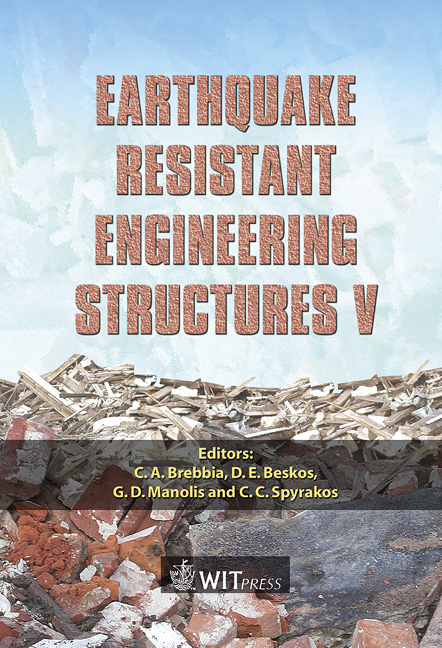Using Mushroom Shaped Basements Under Buildings As An Isolator In Order To Reduce The Earthquake Effect On Structures
Price
Free (open access)
Transaction
Volume
81
Pages
9
Published
2005
Size
2,149 kb
Paper DOI
10.2495/ERES050601
Copyright
WIT Press
Author(s)
A. Beirami Shahabi & M. Barghian
Abstract
A new base isolation method for reducing the destructive effect of earthquakes is proposed. In this method mushroom shaped basements are used under structures as base isolation. These basements have a spherical surface and are located on foundations. Basements have arms that are connected to structure columns. When the length of the arm is less than the radius of the spherical surface, their action is similar to a spring, and so when a displacement in a structure happens, a returning force is applied to the structure and the stability of the structure is guaranteed. The specific of these springs is that their stiffness can easily be set. The stiffness can be adjusted in such a way that firstly, the force applied to the structure under earthquake load will be acceptable and, secondly, the maximum displacement will not exceed allowable limit. The basements together with the structure were modeled as a one-degree of freedom system of a mass spring and damper. A FORTRAN program was written to determine the response of the system against earthquake acceleration. Three different earthquakes were considered. The results show that using the proposed method is very effective in reducing the action of earthquakes on structures. Keywords: seismic isolation, passive control, mushroom shaped basements, ball bearing isolation. 1 Introduction Now a days base isolation is a new thought as an seismic design approach in which the earth movement due to earthquake is limited from transmission to a building, therefore the hazards of earthquake to structures are reduced [1].
Keywords
seismic isolation, passive control, mushroom shaped basements, ball bearing isolation.





